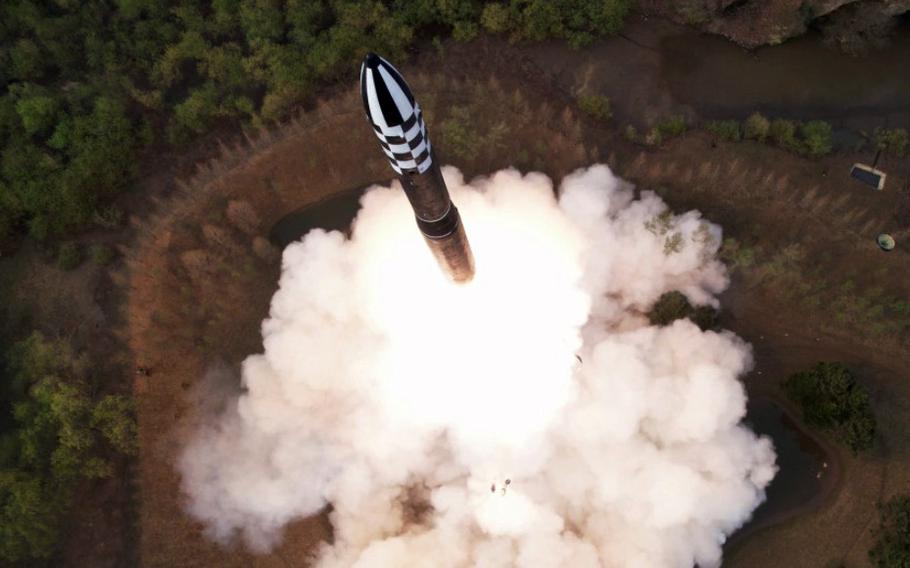
North Korea launches a solid-fueled Hwasong-18 intercontinental ballistic missile on April 13, 2023, according to this image from the state-run Korean Central News Agency. (KCNA)
CAMP HUMPHREYS, South Korea — North Korean state media warned Thursday that a missile-warning system shared by the United States, South Korea and Japan will undermine security in Northeast Asia.
The real-time, data-sharing, missile-warning system developed by the three countries is an attempt to “rationalize their adventurous military movements,” according to the state-run Rodong Sinmun.
The U.S.-led system, which is due to come online this month, is a “threatening” military tool that will destabilize the region, according to the newspaper.
The system will “jointly respond to North Korean nuclear and missile threats,” Defense Secretary Lloyd Austin said during a November press conference in Seoul.
Missile-defense systems in South Korea have been a thorny topic not just for the North, but also its ally, China, Seoul’s largest trading partner.
After the U.S. deployed a Terminal High Altitude Area Defense, or THAAD, battery in South Korea in 2016, China boycotted South Korean businesses, costing Seoul around $7.5 billion, according to a 2017 study by the Hyundai Research Institute.
The system’s development was agreed upon by President Joe Biden, South Korean President Yoon Suk Yeol and Japanese Prime Minister Fumio Kishida Fumio during the East Asia Summit in Cambodia on Nov. 13.
Washington, Seoul and Tokyo “intend to share [North Korean] missile warning data in real time to improve each country’s ability to detect and assess the threat posed by incoming missiles, a major step for deterrence, peace and stability,” the three leaders said in a joint statement at the summit.
The leaders also agreed to conduct trilateral defense training in the upcoming year to deter North Korea.
The allies have already carried out several military exercises in response to North Korea firing 22 ballistic missiles so far this year.
Warships from the three countries sailed south of the Korean Peninsula on Nov. 26 for a one-day exercise that included air-defense drills, maritime maneuvers and their response to threats from unmanned aerial vehicles, the South’s Ministry of National Defense said at the time.
South Korean and Japanese fighter jets also flew alongside a nuclear-capable B-52 Stratofortress in the first-ever trilateral air drill between the countries on Oct. 22.